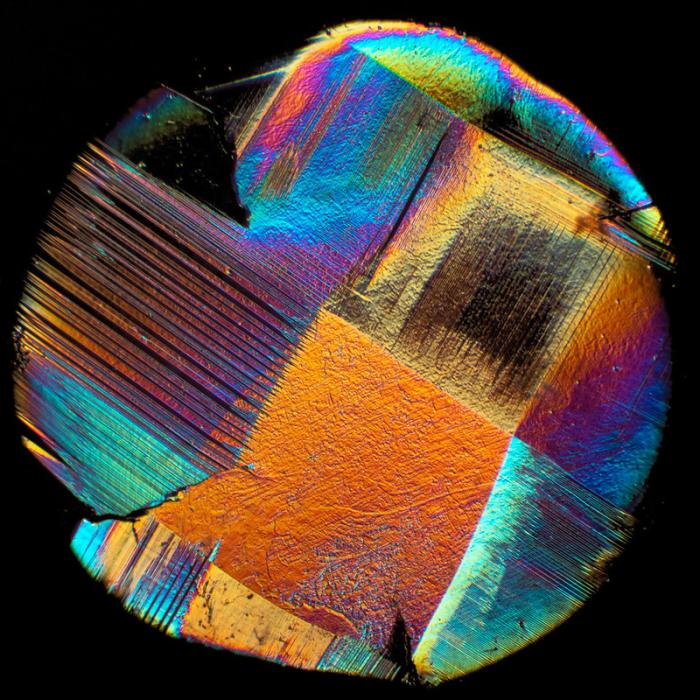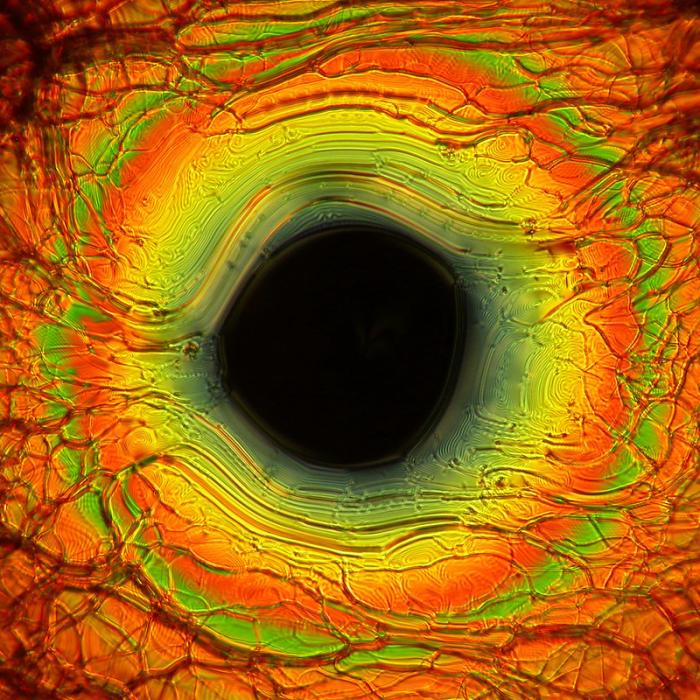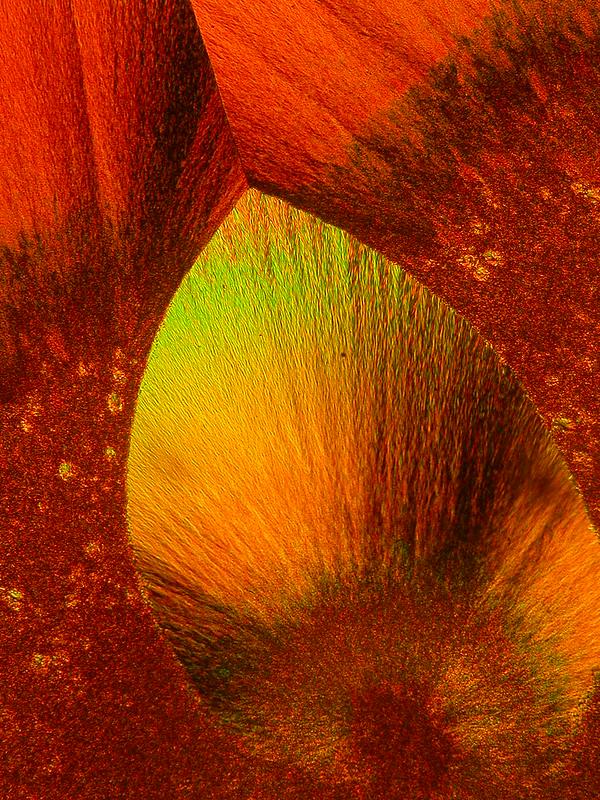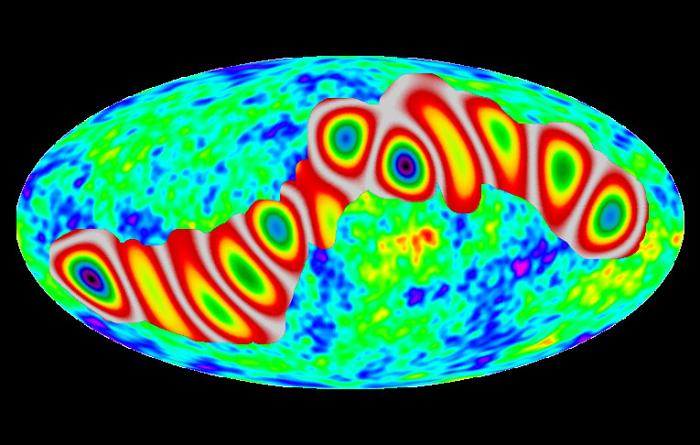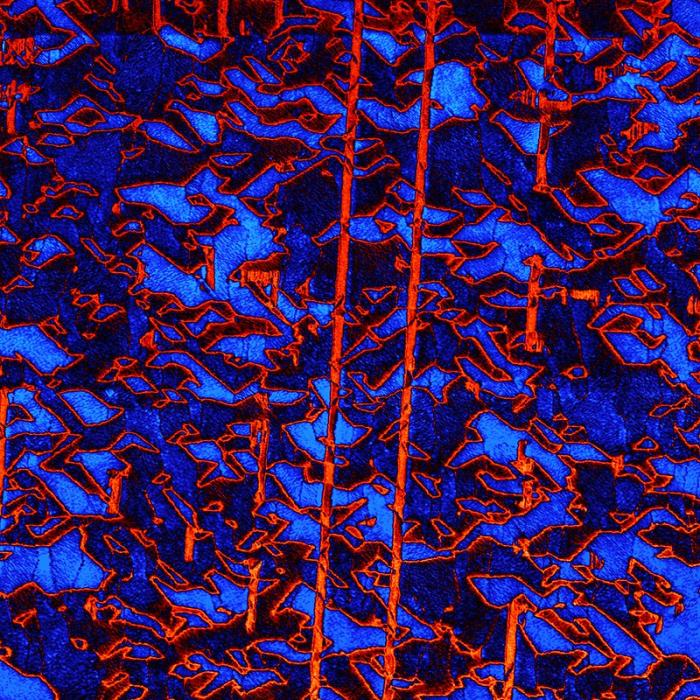The best photo of the FZU Photo Competition 2021 was taken by Denyse Musiienko, Ladislav Straka and Ross Colman using interference microscopy to capture a martensitic structure. In an absolute ranking of 126 submissions, second place was won by Alexej Bubonov, who also came second in 2020. The winners of this year’s contest have won third place too.
“The photos submitted in the third year of the FZU Photo Competition dispel a widely held myth that exact sciences pay no attention to aesthetic values. The photos taken by researchers, whether with a microscope or within a computer modelling process, reveal the hidden beauty of nature,” says Jiří Červenka, FZU Science Secretary and one of the jurors.
All awarded images, some of which were used for the FZU 2022 calendar, are available in an online gallery. The submissions for the FZU Photo Competition were evaluated by a jury that consisted of employee representatives, the FZU management and the FZU PR team last December.
1st place
Denys Musiienko, Ladislav Straka, Ross H. Colman: The outcome of the battle to win place in a cylindrical crystal between martensite variants. Interference microscopy (Nomarski contrast) in the Zeiss Axiolmager Z1 microscope.
2nd place
Alexej Bubnov: Observing liquid crystal textures in polarised light microscope
3rd place
Denys Musiienko, Ladislav Straka, Ross H. Colman: Growing martensite variants that fight for place in a cylindrical crystal. Interference microscopy (Nomarski contrast) in the Zeiss Axiolmager Z1 microscope.
4th place
Alexej Bubnov: Observing liquid crystal textures using polarised light microscope
5-8th places
Roman Truneček: Emission nebulae in the Constellation Orion IC 434 (the Horsehead Nebula) and NGC 2024 (the Flame Nebula), captured in Velké Popovice, Czechia, on the night of 14-15 February 2021.
Karel Hruška: ZnO nanocrystal images. Instead of growing regularly on a substrate, the crystals have aggregated into what is shown in the picture (image taken by the RAITH electron microscope).
Martin Mašek: A starfield on the boundary between the Constellations Scorpius and Ophiuchus; there are numerous dark nebulae shadowing more distant stars in the background. In contrast, the reflection nabulae are observable as they reflect the light of the nearby stars.
Maryam Mansoori Kermani: The representation of a theoretical model containing a silicon crystal wafer and two water molecule layers, captured using the VMD (molecule dynamics visualisation) programme.
Amel Durakovic, James Creswell: Revealing patterns in the cosmic microwave background. By analysing the temperature variations of the cosmic microwave background we have discovered mysterious, as-yet inexplicable arrangements that most likely don´t come from the chaotic initial conditions.
10-8th places
Alexej Bubnov: Observing liquid crystal textures using polarised light microscope
Fedir Borodavka: Feroelectrical domain structure of the PbTiO3 thin layer.
